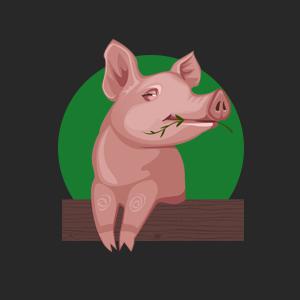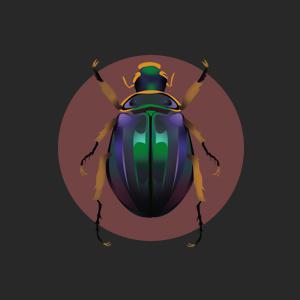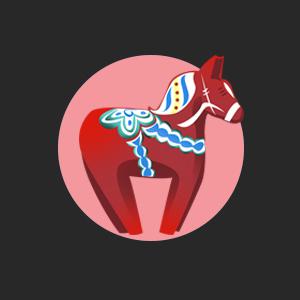Trying to seek out luck is something people – gamblers, athletes, performers, alike – inevitably try to do. Some seek out lucky charms or totems. Others rely on lucky animals for luck. People can have skills and knowledge and put in their time and energy. But there’s always a small part of any single outcome that’s down to chance.
What is Luck?
Luck – what exactly is it? It’s defined as a combination of circumstances, events, etc., operating by chance to bring good or ill to a person. The concept of luck, either positive or negative, is a universal element of every culture. Our habits and ideas about luck are often remnants of past times. Back when a lack of understanding about how the world worked inevitably led to attempts to create some kind of logic of our own. It’s called the uncertainty hypothesis. It’s the idea that when individuals are unsure of an outcome, they try to find a way to control it.
Here at Planet 7 Casino, we believe wholeheartedly in doing things your own way. Find your own balance of what practically works for you as a gambler. But don’t shy away from some personal touches that enhance your enjoyment. Lucky symbols are a perfect example. Don’t blow your whole payroll just because you’ve added an expensive new trinket to your arsenal. But don’t scoff at and dismiss what can be a fun aspect of your experience.
Luck comes in many forms. There are some well-known good luck symbols like evil eye charms, four-leaf clovers, and rainbows. But there are other interesting examples as well. As part of a three-part series examining how different peoples and cultures perceive luck, we take a closer look at seven lucky animals believed to bring good fortune, their origins, and what they mean to the cultures that hold them dear.
7 – Lucky Pig: Germany
“Glücksbringer” is the German word for lucky charm. Today, you can find plenty of good luck charms sold in Germany, including conventional symbols like four-leaf clovers, ladybugs, and horseshoes. However, one somewhat unusual cultural remnant from a long time ago is the Schwein.
Now, if you find yourself in an altercation with a German-speaking stranger and he calls you a “Schwein,” it’s pretty safe to assume that he’s not paying you a compliment. It’s the German word for pig, related to the English word “swine”. And they’re both insults that can be used to taunt a person that you find unpleasant or contemptible. But, if he adds an important extra syllable and says that you’re a “Glücksschwein,” then you can relax. It’s not an altercation at all! He’s paying you a compliment. He is still calling you a pig, but he’s calling you a good-luck pig. That makes all the difference.
Sacred Swine
So, how did today’s belief in the lucky nature of pigs come to be? There are a few early sources. First, among the Germanic peoples of central Europe and southern Scandinavia, the animal’s early significance originates in mythology. Freyr was the Norse god of peace, rain, sun, and perhaps most importantly, fertility. In one story, two dwarf brothers slaved away at the furnace to craft a special gift for him out of a pig’s skin and golden wire. He was given Gullinbursti (meaning “Golden Bristles”), a magical boar, to pull his chariot. Gullinbursti could run faster than a horse over land or sea, and he had a mane that glowed in the dark. Freyr’s sister, the goddess of love, beauty, fertility, gold, sorcery, and death, also kept her pet boar Hildisvini by her side.
Due to the popularity of these images, the wild boar was viewed as a sacred animal, a symbol of courage, strength, and fertility. With a little research, you’ll find that a great number of good luck tokens emerge initially as symbols of fertility. Before the technological and medical advances of our time, most society’s priority was survival, keeping your family line alive. That meant a lot of praying or worshipping in an effort to ensure offspring.
Pigs and Prosperity across Cultures
For Greek, Roman, and later cultures, there were more practical roots than mythological beliefs. Especially during the Middle Ages, pigs were a sign of wealth. It makes sense for an agricultural society. If you’re able to afford pigs or you manage to breed them successfully, you are also less likely to go hungry and more likely to have a comfortable lifestyle. Owning pigs became a sign of one’s privilege and prosperity. In fact, during this time period, a common consolation prize at various competitions was a piglet. Like a prosperous harvest season, pig breeding was considered a sign of security and good fortune.
In German, “to have luck” is literally translated as “Glück haben”. But today, you can substitute the word for pig with luck and say “Schwein haben” instead (“to have pig”). “Schwein gehabt” is a popular saying that expresses “Got lucky there!” Pig charms can be found in many forms, including amulets, Christmas ornaments, enamel figurines, plastic toys, and most popularly as piggy banks. During New Year’s in German-speaking countries, street markets often sell small marzipan pigs decorated with four-leaf clovers for extra luck in the upcoming year.
6 – Lucky Scarab Beetle: Egypt
The term “scarab” evokes ancient Egyptian culture. It evokes thoughts of elegant, stylized depictions of scarab beetles in artwork, jewelry, and carvings. Even a quick Google search yields just as many popular images of artistic Egyptian renditions than the beetle itself.
Few people realize that the Scarabaeus sacer is, in fact, a species of dung beetle. This insect collects animal dung by rolling it into balls across the desert floor. It finds a suitable location and creates a hidden underground burrow. There it stores the ball of dung, then eats it over the course of several days. During breeding season, the female beetle carefully crafts a ball with a special kind of extremely fine-textured dung and digs a particularly deep and spacious chamber, where she deposits the brood ball. She sculpts it into a pear shape, creates a cavity, lays a single egg in it, and seals it. After the egg hatches, the larva feeds on the ball of dung and later emerges from the dung as a fully-grown beetle.
Of Gods and Insects
In light of the fact that the scarab lifestyle revolves around animal excrement, the ancient Egyptians’ respect and adoration might now seem misplaced. Why would they revere such an insect as sacred? As with Gullinbursti the wild boar, the dung beetle’s significance is rooted in mythology. The sun represented light, warmth, and growth for the Egyptians, but it also signified creation and regeneration. Ra, the ancient god of the sun, ruled the world as the creator of life. The strong link between sun and the creation of life was demonstrated through Khepri, the morning manifestation of Ra. He took the form of a beetle or beetle-headed man, revitalized the sun, then rolled it above the horizon and carried it through the other world after it had set. Like the dung beetle’s brood ball, rolled across the desert sand, Khepri’s sun was a source of new life.
The ancient Egyptians had scarab amulets, swivel rings, impression seals, and more to protect them in this world and the afterlife. These charms were believed to protect the owner from evil and keep him out of harm’s way. They were also believed to harness good luck. Mummies were buried with heart scarabs, large funerary scarabs designed to prevent the deceased’s heart from giving evidence against him when the gods of the underworld were judging him. There was even the belief that whispering information to a scarab beetle, mummifying it, and placing it in the ear of a dead person would help him pass the judgment of the underworld gods.
The scarab is still one of the iconic lucky animals today. It symbolizes eternal life and rebirth, and protects its owner from the dangers of this world and whatever else follows.
5 – Lucky Dala Horse: Sweden
The Dala horse, referred to as Dalahäst in Swedish, is short for Dalecarlian horse. It originates from a historical province in central Sweden called the Dalarna, otherwise known as the Dales (another word for valleys). As the name suggests, the region is known for its beautiful landscape with lakes, campgrounds, and forests. And it is a popular summer vacation destination for Swedes. Many own a second home in Dalarna with beautiful gardens and abundant fruit trees.
The province has strong historical roots. One famous symbol is the Dalecarlian horse, a painted and decorated wooden horse. Due to high calcium levels in the soil, horse breeding is especially prosperous and horse racing has thrived as a result.
A Toy Horse for Kids
The Dala horse is a traditional carved, painted wooden horse that was originally made as a toy for children. While it started out in the Dalarna region, the Dala horse has since spread to other parts of Sweden. Along the way, it underwent a variety of different changes in each region it was introduced to. Each type now bears distinguishing features specific to where they originate so that people can identify exactly where their Dala horse is from. These wooden horses were originally plain and unpainted. But today they are most commonly painted bright red with a harness painted in white, green, yellow, and blue. At some point during their rise to popularity, they came to stand for good luck. They served as valued gifts and even sometimes as a substitute for payment during times of hardship.
Genuine Dala horses are carved from pinewood and painted in the traditional “kurbits” fashion. In Dalarna workshops today, the horses are crafted and painted by at least nine trained craftsmen, and stamped with certifications of authenticity. Along with being an unofficial symbol of Sweden, the Dala horse is thought to represent strength, faithfulness, wisdom, and dignity.
4 – Lucky Elephant: India
The popularity of elephants used as good luck symbols has been on the rise, particularly when it comes to the incorporation of feng shui in home design. The origin of its role as a token of good luck can be traced back to Hinduism. Indian culture views the elephant as sacred and it must always be treated with reverence. For celebrations, they are painted with highly detailed designs in preparation for the grand processions they often take part in.
This animal’s status as a source of good luck originates with the Hindu deity Ganesha, a god with the head of an elephant. Ganesha is the god of wisdom, beginnings, arts and sciences, and more. But he is perhaps worshipped most as the god of prosperity and remover of obstacles. He remains one of the most well-known and beloved of Hindu gods today. His worshippers span various denominations, even extending beyond Hinduism and into Jainism and Buddhism.
How Ganesha Got His Elephant Head
The charm of his origin story may be one cause for his popularity. Many variations have appeared over time. But the most popular common thread of his tale revolves around how Ganesha got his elephant head. It is said that Ganesha was created by Parvati, the goddess of fertility, love, and devotion. She formed him out of clay as her protector and stationed him outside the gate. When Parvati’s husband Shiva came home, Ganesha refused to allow him to enter, in spite of Shiva’s explanation that he was Parvati’s husband. Enraged that the boy would come between him and his wife, Shiva beheaded him.
When Parvati learned of this, she was greatly angered and threatened to destroy all of creation. She was only be pacified when Brahma the creator agreed to bring the boy back to life. He replaced Ganesha’s head with the head of a powerful elephant and breathed new life into him, elevating his status as the first among the gods. This is why he is honored before all other gods during religious ceremonies.
The Elephant in the Room
With the connection of such a powerful religious figure, the association between the elephant and strength, good fortune, power, and fertility is clear. Place elephant figures anywhere within a living space for luck. But they are especially favored as a decoration for the entrance of a home, to usher in good luck for those who live there. In particular, elephant figures sport upward-facing trunks so that they can shower blessings on those who pass by.
Elephant figurines come in all shapes and sizes and you can find them everywhere. They appear in street market stalls, home goods stores, online shops, and ethnic stores. Just as Ganesha protected his mother’s home and just as he was restored with new life, elephant symbols are a source of protection, fertility, new life, and good luck.
3 – Lucky Ladybug: Europe
Even people with the most intense fear of insects usually make one exception: ladybugs. Viewed as the most benign and gentle of bugs, ladybugs (also known as ladybirds) are considered lucky by many cultures around the world, particularly in European countries. Old stories, baby clothing, and superstitious sayings often feature ladybugs because they symbolize love, peace, and happiness. Ladybugs are said to bring abundant blessings.
There are many different translations for ladybugs. In Turkish, the name for ladybug is “uğur böceği,” which translates to “good luck bug.” Historically, many European names for the insect referenced Freyja, the Norse goddess of fertility, but today’s vocabulary reflects a shift to the Virgin Mary.
Ancient Bug Wars
So where did these beliefs come from? According to one story from the Middle Ages, a scourge of aphids in Europe was tearing apart the farmers’ fields and ruining their crops. When the havoc continued, the farmers grew desperate and prayed to the Virgin Mary for aid. She heard their prayers and had mercy on the farmers. She delivered thousands of ladybugs that flew down to eat the aphids, saving the crops from destruction and the villagers from starvation. Out of their gratitude, the farmers christened the little insects “Beetles of Our Lady”. They eventually grew to be known simply as “ladybugs.” Today, the German word “Marienkäfer” literally translates to “Mary beetle”. Similarly, the term is mariehøne in Danish, marihøne in Norwegian, maríuhæna in Icelandic, and mariuhøna in Faroese. All contain references to the Virgin Mary.
Sometimes, the ladybug is linked directly to God. In Irish and Polish, the names translate to “God’s little cow,” and in Dutch it means “little animal of our Good Lord.” In Hebrew and Yiddish, the names mean “Moses’s little cow” or “little horse,” and sometimes called the “little Messiah.” But in countries like Russia, Turkey, and Italy, just the appearance of a ladybug is considered good luck. It’s a special opportunity for someone to make a wish, or a sign that someone’s hopes will soon be granted. In other places, it’s viewed as a lucky sign when a ladybug lands on you.
There are also some interesting variations. If a ladybug crawls over an unmarried woman’s hand, she will be married within a year. Also, if a ladybug lands on something, it will be replaced with a new version. And if it lands on a person who is sick, it takes the sickness away.
A Spot of Luck
Another significant aspect is the number of spots on a ladybug’s shell. The number of spots will reveal the number of months of good luck the person experiences. For a newlywed woman, the number of spots on the insect’s back indicates how many children she will have.
Given the significance of religion and folklore in today’s traditions and beliefs, it’s no surprise that the Virgin Mary’s beetle is still commonly regarded as a benevolent presence and sign of good things to come.
2 – Lucky Alligator Teeth: Africa
Alligator teeth are one of many animal parts that are considered especially lucky for gambling. Although this belief is now most commonly found in America, it was brought over from Africa by slaves to the southern United States.
The belief that alligator teeth are lucky originated from voodoo, a form of animism that developed differently into many forms wherever it spread. Alligators shed teeth frequently, and slaves would often come into contact with the creatures in the swamps and marshes. The slaves were captivated by the power of the alligator’s teeth, jaws, and feet. They also admired the effort and sheer strength the creature possessed. They watched how it could catch and keep a firm grip on its prey. This fascination led them to view the teeth and feet of alligators as symbols of power, strength, and perseverance. They saw the energy used by the alligator to hold onto its prey as a representation of the power to grasp and hold onto things in life. So they collected alligator teeth for themselves as a way to hold on to hope.
That Voodoo You Do
In spite of the fact that their practices were prohibited, the slaves continued to practice their voodoo traditions in secret. They didn’t simply keep collections of alligator teeth. They used them in gris-gris bags, also called mojo amulets. These were believed to protect the wearer from evil or bring luck. Alligator teeth were often included in mojo bags but were also worn around the neck as standalone pendants to bring good luck and protection.
The teeth of other species of animals like badgers and bears were also considered lucky, but alligator teeth were the most popular. The practice of anointing alligator teeth and feet in oil was a common practice. Wearing the teeth, claws, and feet of alligators around one’s neck was thought to promote strength and bring good luck.
Today, people use alligator teeth and feet regularly to increase luck, specifically when it comes to money matters and financial success, particularly in gambling.
1 – Lucky Dragon: China
If you were born in the year 1952, 1964, 1976, 1988, or 2000 (and so on, give or take twelve years), you know what it’s like to have true luck on your side. People born in these years all share the same auspicious Chinese zodiac sign: the dragon. Notable dragon personalities include Salvador Dali, Rihanna, Bruce Lee, and even Joan of Arc. In China, dragon years are the most popular to have children as it’s considered to be the most superior zodiac sign.
Ideas of the dragon vary greatly between Western and Eastern cultures. The European dragon is an aggressive, fire-breathing creature that serves as an antagonist to noble knights. In contrast, the Chinese dragon is a spiritual being that represents prosperity, strength, and good luck. Like deities in many cultures, it can be a positive or negative force, depending on the worthiness of the individual it’s dealing with. The Chinese sometimes refer to themselves as descendants of the dragon.
The sheer volume of beliefs surrounding the mythical Chinese dragon is impressive, largely due to the nation’s extensive history. Depictions of dragons in China date all the way back to the Neolithic era. Back then it seemed to resemble a curved, stubby pig in the fetal position. Check out our article about Gambling in Ancient Civilizations.
Enter the Dragon
Though it’s difficult to trace the evolution of the dragon accurately. Bu it is believed that the dragon grew in significance because it was seen as a reptilian symbol of evolution and qi energy. According to the Han Dynasty scholar Wang Fu, dragons generally tended to have nine physical features. They had a horse’s head and a snake’s tail. Dragons possessed antlers resembling those of a stag, a head like a camel, and the eyes of a demon. Their necks were long and snakelike, their midsections were like clams, and their skins were scaly like a fish. They had bird claws, padded feet like a tiger, and the ears of a cow.
Most importantly, each dragon had a broad bump at the top of his head, called a “chimu.” Without this, he would be unable to ascend above the earth. It’s also interesting to note that these features do not include wings. Chinese dragons’ ability to fly was a mystical trait that was completely unrelated to its physical attributes.
Like the ladybug, the dragon was most prominent when human survival was at the mercy of natural elements. In the case of the Virgin Mary’s beetles, the crops were being destroyed by aphids. When it came to Chinese dragons, dragons ruled moving bodies of water, like waterfalls, rivers, or seas. They also had control over the weather, especially rain, and could cause floods, tidal waves, and storms. The Chinese believed that the worst floods punished mortals for upsetting a dragon.
The dragon continues to appear in jewelry, tattoos, clothing, and popular art all around us. And it remains a symbol of power, strength, and a good luck animal to this day.
Conclusion
These lucky animals are just a small fraction of a vast array of good luck symbols with fascinating origin stories. They demonstrate that times may change, but our human tendencies to try to influence our personal lives are still the same. For more interesting facts on luck, check out the other article in this series about top Chinese lucky charms.
Just remember, while you might enjoy the idea of having lucky animals or symbols by your side when you gamble, what you can truly rely on is our regular offering of lucky casino bonuses to carry you to untold riches!









